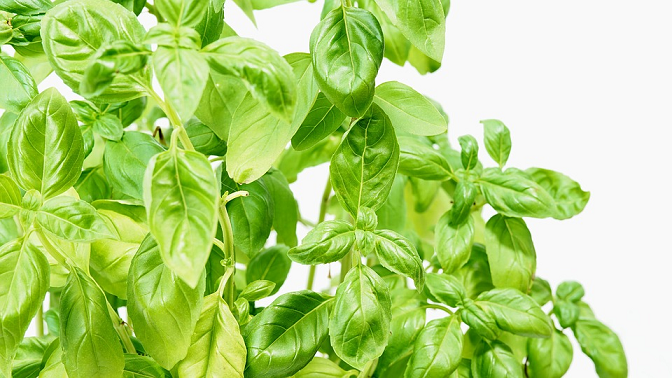Fresh herbs and spices are the defining point of any recipe. A meal can be expertly cooked, and served with the most immaculate presentation. But without the proper seasonings, it just won’t ever taste nearly as exquisite as it possibly could.
Truly there is something defining about well seasoned food. In the dishes served in Henderson Italian restaurants, and in other locations, the chefs prepare food to order, using some very unique herbs and spices that make italian dishes truly one of a kind. In this article, we are going to learn more about some of the amazing herbs and spices of italy that should be in any kitchen.
1. Thyme
Known in italian as timo, thyme is an aromatic herb that is related to mint. It grows to a height of about fifteen inches and has small rounded leaves on woody stalks with pink flowers. Though they share a common name, this herb is not the same species as wild thyme.
Today the plant is commonly found throughout much of the North American continent, but it originated in the southern Mediterranean. This herb derives its name from the Greek word thumos meaning “courage”.
During the crusades, Christian knights wore sprigs of thyme on their armor as a sign of courage in battle. The scent of thyme was believed to grant someone strength and prowess on the battlefield.
This savory herb is most commonly used for seasoning meats, soups, and stews.
2. Rosemary
Rosemary or rosmarino is an herb in the mint family. It is a small evergreen shrub, Rosmarinus officinalis, whose 1-inch leaves resemble curved pine needles. It takes its name from the combined latin words ros, and marinus, meaning “dew of the sea.” However, medieval folklore makes the claim that the name of the plant is rooted in Biblical history.
The story goes that during her flight from Egypt, the Virgin Mary draped her blue cloak on a Rosemary bush. She then laid a white flower on top of the cloak. That night, the flower turned blue and the bush was thereafter known as the rose of Mary, though the historical verisimilitude of this story is unlikely.
Rosemary is commonly used as a flavoring for various meats including, beef, lamb, veal and pork, and was historically used as a condiment for salt cured meats.
3. Sage
Known in Italian as salve, sage is an herb with a sweet and savory flavor and derives its name from the Latin salvere meaning “to be saved.”
In ancient Rome, sage was considered to have substantial healing properties, particularly helpful in the digestion of the ubiquitous fatty meats of the time, and was deemed a part of the official Roman pharmacopeia.
Sage is an excellent source of fiber, as well as vitamins and minerals, and has even been proven to have some antibacterial properties. It has been used historically as an incense and as part of shamanistic traditions by many cultures, and even today, many who prescribe to the “new age spiritual philosophy” claim that sage has qualities that ward off evil spirits and bad energy, which is nice…if you believe in that sort of thing.
Sage is a useful addition to sauces, marinades and even as an aromatic for smoking meats.
4. Oregano
Oregano is a warm and aromatic yet slightly bitter herb in the mint family. The name is derived from the Greek word oros, meaning “mountain”, and the verb ganousthai meaning “take delight in.” From that we get the modern name that translates roughly to “mountain’s delight.” This delightful herb is used widely throughout the mediterranean, but is most commonly used in italian cooking as a traditional ingredient in tomato sauces as well as a seasoning for meat and seafood.
Oregano isa tasty way to add essential vitamins and minerals like vitamin A, B6, C, E, and K to your diet. Plus, it contains powerful phytochemicals that are responsible for much of its medicinal benefits.
The ancient Greeks used it as a poison antidote, as well as to treat infections, skin irritations, and convulsions. Use of oregano spread throughout Europe and Northern Africa, and by the Middle Ages, it was commonly used as much for its taste as it was for medicinal purposes.
5. Anise
Or, anice in Italian is a plant of the parsley family. The leaves of the anise plant can be used as an herb, it’s seeds of the anise plant, called aniseed or anise seeds, are used as a spice, either ground or whole. It’s flavor is similar to that of fennel, liquorice, and even star anise. However, it is not related to any of these species, even though it shares a name with the latter most herb.
Anise, also cultivated for medicinal properties, is used for upset stomach, intestinal gas, and as an expectorant to increase productive cough. It also has uses as a diuretic to increase urine flow, and as an appetite stimulant.
It is a common ingredient in italian sausages, especially those made with pork. It is is even distilled into a sweet liquor called sambuca, which is the worst nightmare of anyone who cannot stand the taste of black licorice.
A Matter of Taste
These are just a few of the many great herbs that come from the mediterranean world, but they aren’t the only ones. We’ve only just scratched the surface with this list, as there are literally hundreds of unique herbs and spices found in that region.
What are your favorite herbs that are not on this list?
Leave us a comment with your suggestions in the section below.


Pingback: Avoiding Infection with Natural Healing